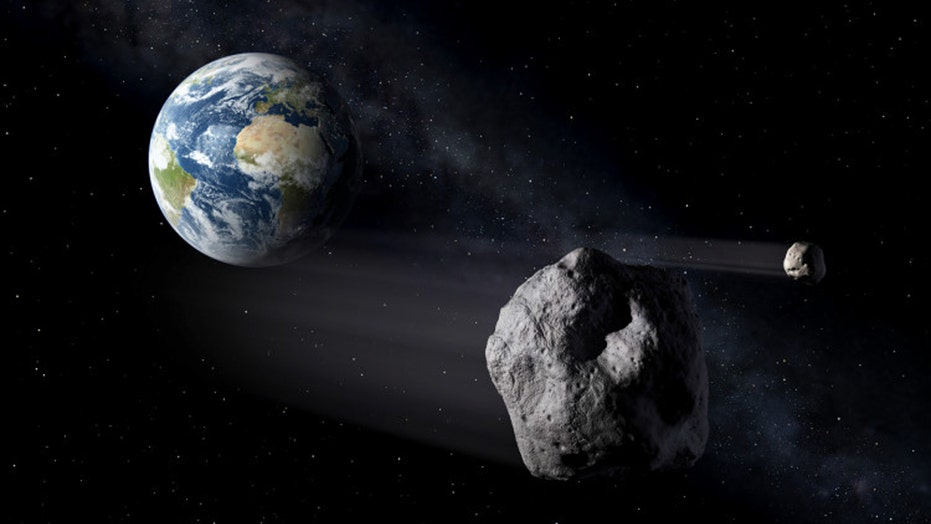https://www.foxnews.com/science/asteroid-fly-past-earth-election-day-nasa-saysBy Chris Ciaccia | Fox News

As if 2020 isn't already crazy enough, an asteroid is headed toward Earth just before Election Day.
According to NASA JPL's Center for Near Objects Studies, space rock 2018VP1 will fly past Earth on Nov. 2, one day before the U.S. presidential election.
At 6.5 feet in diameter, it is not considered a "potentially dangerous" near-Earth object (NEO), but the space agency is keeping its eye on it and other asteroids like it, nonetheless. It was first observed on Nov. 3, 2018, and last observed 13 days later.
PICKUP TRUCK-SIZED ASTEROID FLEW WITHIN 2K MILES OF EARTH AND NASA DIDN'T SEE IT
There are reported to be three potential impacts based on the 21 observations NASA has made of the asteroid. However, the likelihood of direct impact is less than 0.41%, NASA noted.
"Asteroid 2018VP1 is very small, approximately 6.5 feet, and poses no threat to Earth," a NASA spokesperson told Fox News via email. "If it were to enter our planetís atmosphere, it would disintegrate due to its extremely small size. NASA has been directed by Congress to discover 90% of the near-Earth asteroids larger than 140 meters (459 feet) in size and reports on asteroids of any size."
On Aug. 16, an asteroid of similar size, 2020 QG, became the closest space rock ever recorded to fly past Earth. NASA was unable to see it, as it flew past the Earth from the direction of the sun.
A NASA spokesperson told Fox News previously that "similar asteroids" to 2020 QG "would have disintegrated in Earthís atmosphere had they impacted." The spokesperson added that the agency is working on a "space-based infrared telescope that will have better capability to identify similar asteroids."
"Potentially hazardous" NEOs are defined as space objects that come within 0.05 astronomical units and measure more than 460 feet in diameter, according to NASA. According to a 2018 report put together by Planetary.org, there are more than 18,000 NEOs.
A NASA spokesperson told Fox News that "similar asteroids" to 2020 QG "would have disintegrated in Earthís atmosphere had they impacted." The spokesperson added that the agency is working on a "space-based infrared telescope that will have better capability to identify similar asteroids."
This is not the first time in recent memory that NASA has missed a NEO similar to 2020 QG. In February, researchers in the Netherlands discovered 11 "potentially hazardous objects" that are not on NASA's list of "potentially hazardous" near-Earth objects, using advanced artificial intelligence.
NASA unveiled a 20-page plan in 2018 that details the steps the U.S. should take to be better prepared for NEOs, such as asteroids and comets that come within 30 million miles of the planet.
A recent survey showed that Americans prefer a space program that focuses on potential asteroid impacts over sending humans back to the moon or to Mars.
MILE-LONG ASTEROID COULD BE DANGEROUS TO LIFE ON EARTH IN MILLIONS OF YEARS IF IT BREAKS UP: SCIENTISTS
NASA Administrator Jim Bridenstine said in April 2019 that an asteroid strike is not something to be taken lightly and is perhaps Earth's biggest threat.
Follow Chris Ciaccia on Twitter @Chris_Ciaccia